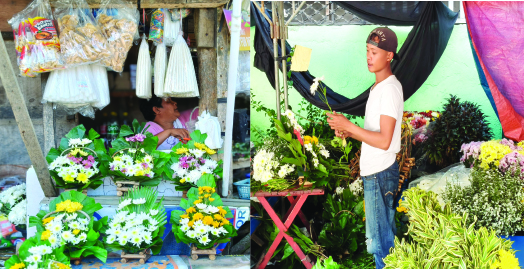The traditional hiring process often prioritizes skills and experience. Resumes are meticulously scrutinized for specific qualifications, and interviews focus on technical expertise and past achievements. However, a growing number of entrepreneurs are challenging this approach, increasingly prioritizing attitude and cultural fit over specific skills. This shift reflects a deeper understanding of the dynamics of a successful team and the limitations of relying solely on technical proficiency.
The Limitations of Skills-Based Hiring:
While technical skills are undeniably important, relying solely on them can lead to several pitfalls:
– Skills Decay: The rapid pace of technological advancement means that even the most sought-after skills can become obsolete relatively quickly. Someone with exceptional skills today might be outpaced by technological changes tomorrow. Adaptable, growth-minded hires reduce this risk.
– Lack of Cultural Fit: A highly skilled individual might not be a good fit for a company’s culture. Personality clashes can disrupt team dynamics, hindering productivity. Prioritizing cultural fit ensures a more harmonious and collaborative work environment.
– Ignoring Potential: Focusing solely on existing skills overlooks the potential for growth and development. Someone with a strong work ethic, a positive attitude, and a willingness to learn can quickly acquire new skills, often surpassing individuals with more extensive but less adaptable skill sets.
– High Turnover: Employees who are a poor cultural fit or lack intrinsic motivation are more likely to experience burnout and leave the company. This leads to high turnover costs, disrupting team dynamics and hindering productivity. Prioritizing attitude reduces this risk.
– Missed Opportunities for Innovation: Teams composed solely of individuals with similar skill sets and perspectives can become stagnant and less innovative. Diversity in thought and approach, fostered by hiring for attitude, can lead to more creative problem-solving and breakthroughs.
The Rise of Attitude-Based Hiring:
Entrepreneurs are increasingly recognizing the importance of attitude and cultural fit in building a high-performing team. This shift is driven by several factors:
– Emphasis on Adaptability: In today’s dynamic business environment, adaptability is paramount. Entrepreneurs are looking for individuals who can quickly learn new skills, embrace change, and navigate uncertainty. A positive attitude and a growth mindset are key indicators of this adaptability.
– Focus on Teamwork and Collaboration: Successful businesses rely on strong teamwork and collaboration. Individuals with a positive attitude and a willingness to cooperate are more likely to contribute to a productive and harmonious team environment.
– Importance of Intrinsic Motivation: Entrepreneurs are seeking individuals who are intrinsically motivated, driven by a passion for their work and a desire to contribute to the company’s success. This intrinsic motivation often outweighs the value of specific skills.
– Recognition of Soft Skills: Soft skills, such as communication, problem-solving, teamwork, and adaptability, are increasingly recognized as crucial for success in any role. These skills are often more difficult to assess through traditional methods, leading to a greater emphasis on attitude and personality.
– Building a Strong Company Culture: Entrepreneurs understand that a strong company culture is essential for attracting and retaining top talent. Hiring individuals with the right attitude ensures that new employees align with the company’s values and contribute to a positive work environment.
How to Assess Attitude in the Hiring Process:
Assessing attitude effectively requires a shift in the hiring process:
– Behavioral Interviewing: Asking candidates to describe past situations where they demonstrated specific attributes, such as resilience, teamwork, or problem-solving skills, provides valuable insights into their attitude and work style.
– Cultural Fit Assessments: Using assessments to gauge candidates’ alignment with the company’s values and culture can help identify individuals who are likely to thrive in the work environment.
– References and Background Checks: Checking references and conducting thorough background checks can help verify candidates’ claims and gain a more comprehensive understanding of their work history and personality.
– Trial Periods or Internships: Offering trial periods or internships allows entrepreneurs to observe candidates’ work ethic, attitude, and cultural fit firsthand before making a hiring decision.
– Team Interviews: Involving the team in the interview process allows potential colleagues to assess the candidate’s personality and compatibility.
The Long-Term Benefits:
While the initial investment in assessing attitude might seem more time-consuming, the long-term benefits are significant:
– Reduced Turnover: Employees with a positive attitude and strong cultural fit are more likely to stay with the company, reducing turnover costs and improving team stability.
– Increased Productivity and Innovation: A team with a positive and collaborative culture is more likely to be productive and innovative.
– Stronger Company Culture: Hiring for attitude contributes to a strong and positive company culture, attracting and retaining top talent.
– Greater Employee Satisfaction: Employees who feel valued and appreciated are more likely to be satisfied with their work, leading to improved morale and productivity.
In conclusion, the shift towards prioritizing attitude over skills in the hiring process reflects a deeper understanding of what truly drives success in a dynamic business environment. While technical skills remain important, adaptability, teamwork, and a positive mindset are increasingly recognized as essential ingredients for building a thriving and successful team. Entrepreneurs who embrace this attitude-based approach are not only building stronger teams but also fostering a more fulfilling and impactful work culture.
————–
If you have any questions or would like to share your thoughts on the column, feel free to send an email to jca.bblueprint@gmail.com. Looking forward to connecting with you!







Tino and Haiyan
Tino is coming in and Haiyan is on its 12th year , both scenarios are feared.
Their development in the same region is significant, as the warm waters of the Philippine Sea often fuel rapid intensification of storms. Additionally, both typhoons emerged in early November, a period notorious for producing some of the most violent cyclones in Philippine history.
Typhoon Haiyan is feared for its sheer destruction: over 6,000 lives lost, thousands injured, and billions in damages. Its storm surge obliterated coastal communities, and its winds flattened entire towns. Typhoon Tino, though not as powerful, was feared due to its timing and trajectory—raising concerns of flash floods and landslides in areas still recovering from past disasters.
The path of Typhoon Tino is analogous to the same trajectory of Haiyan or Yolanda. The fear stems not only from physical damage but also from the psychological toll. November storms often catch communities off guard, as the tail end of the year brings a false sense of calm. The memory of Haiyan’s devastation amplifies anxiety whenever a November storm forms.
Nakaka hinumdum kita han kakusog! ( We remember the fury Yolanda!)
November storms had been strong and historically destructive , I remember Rosing in 1995, it was one hell of a storm, as a student council officer we were giving relief goods from our fellow students because of the brute force it carried left its boarding houses on its knees.
Typhoon Tino and Typhoon Haiyan serve as stark reminders of nature’s fury, especially during November. Their similarities in origin, timing, and threat level highlight the need for vigilance, preparedness, and respect for the forces that shape our climate. As climate change continues to influence weather patterns.
Pagbantay ngan pag andam kita!